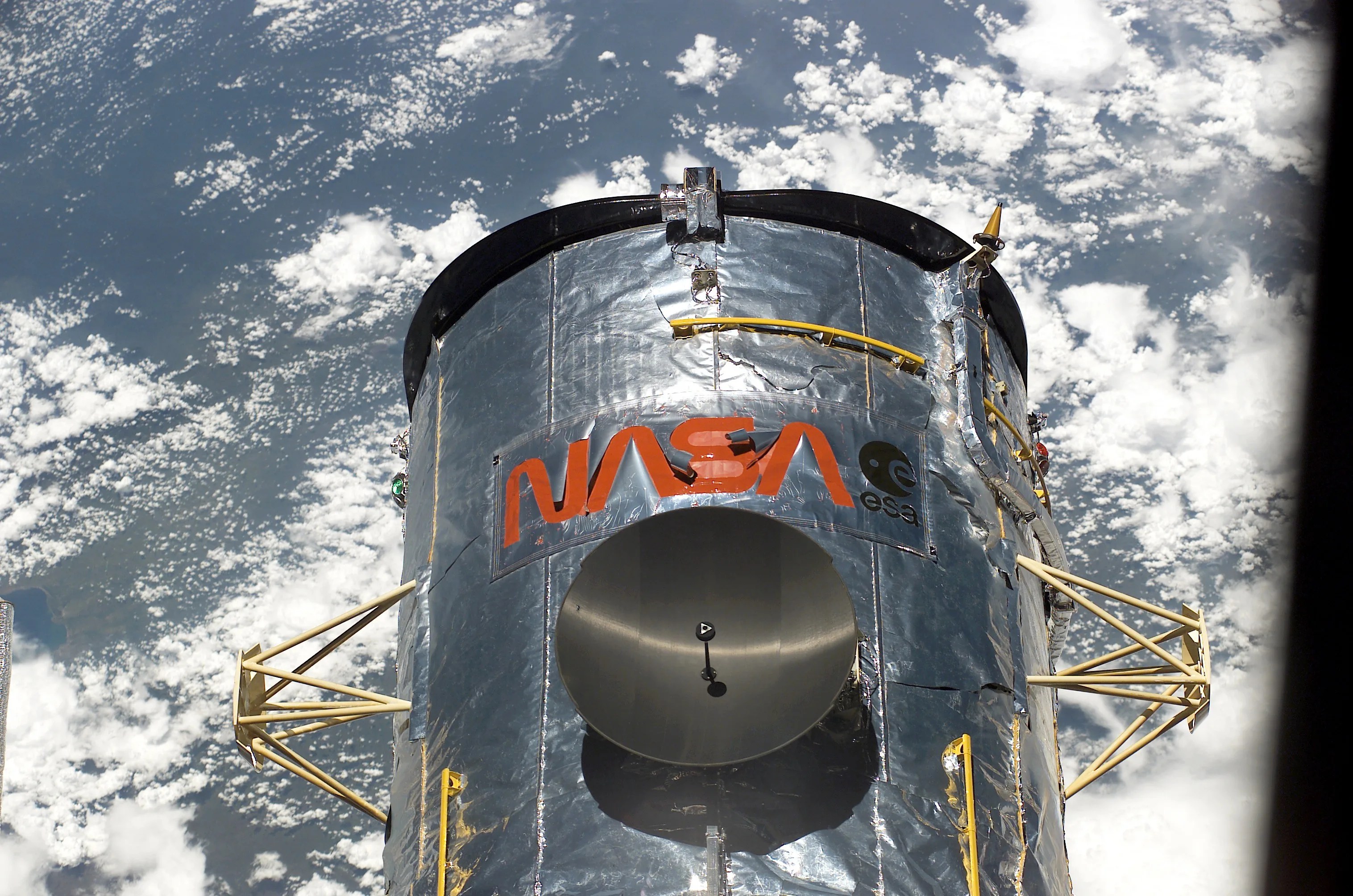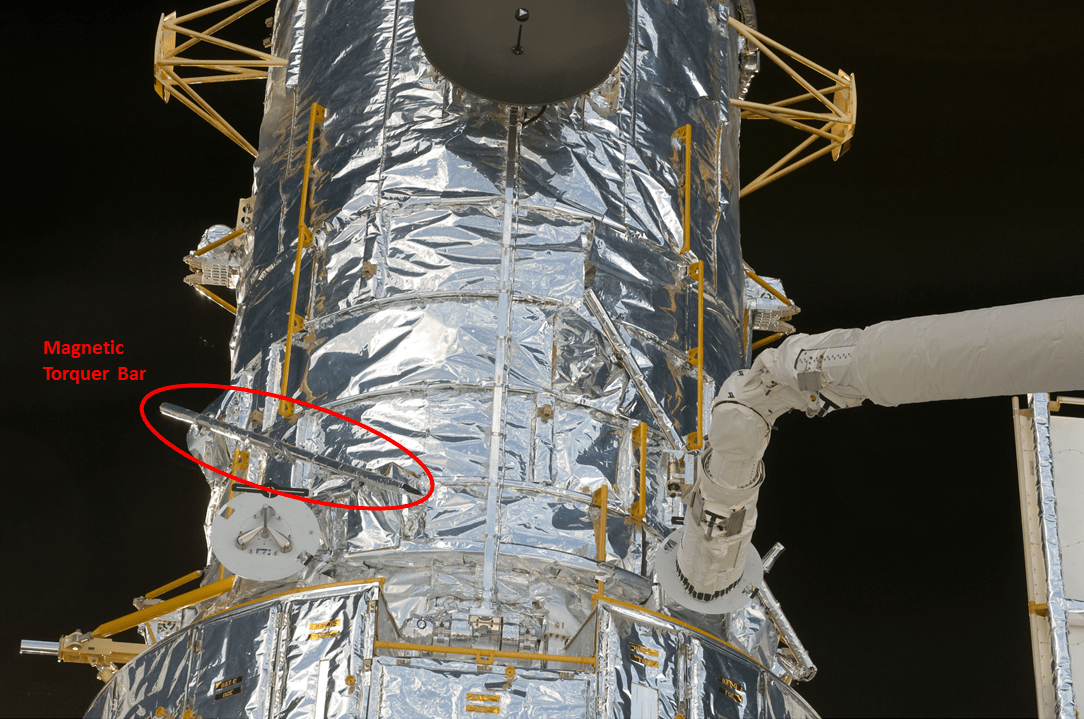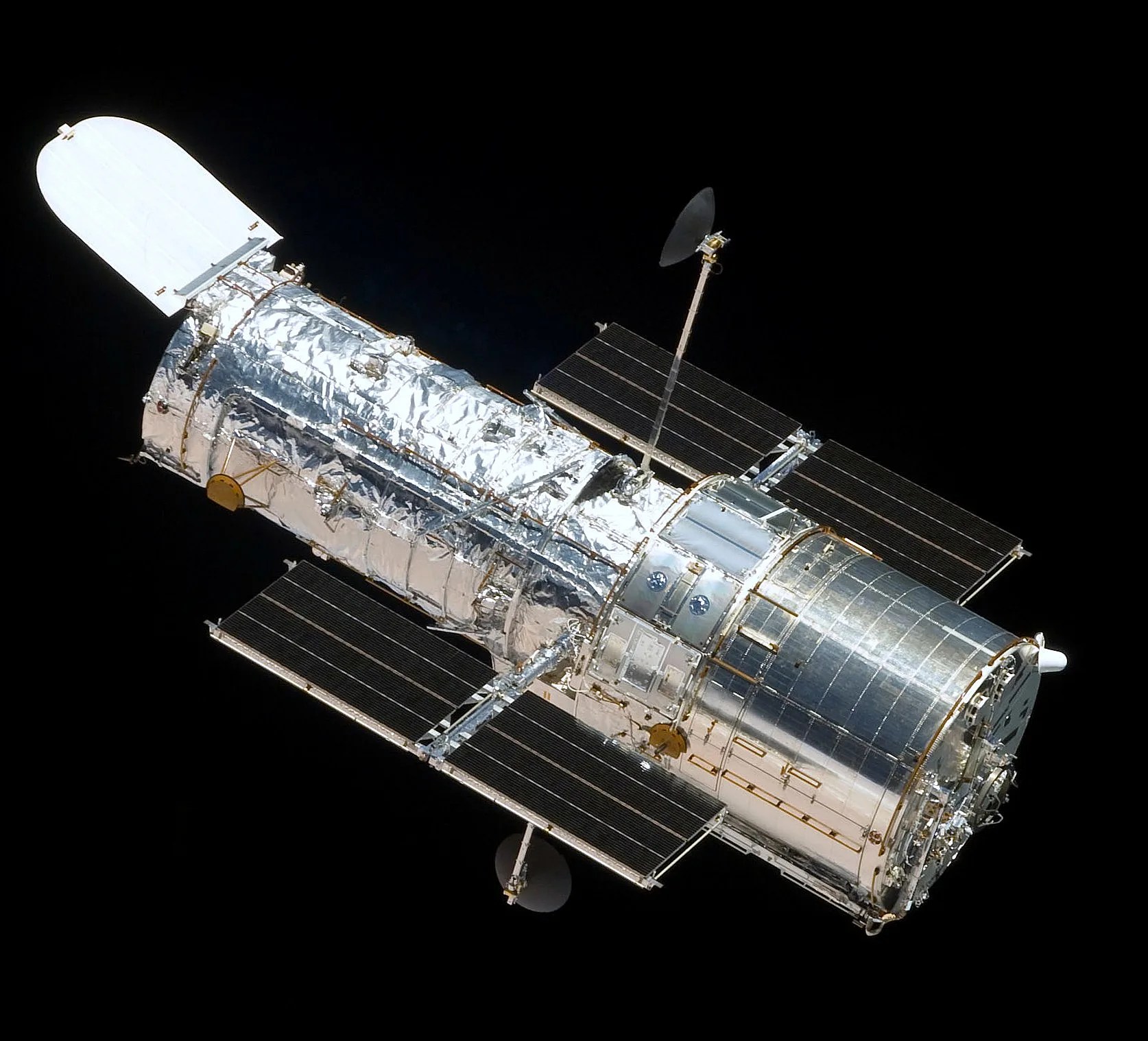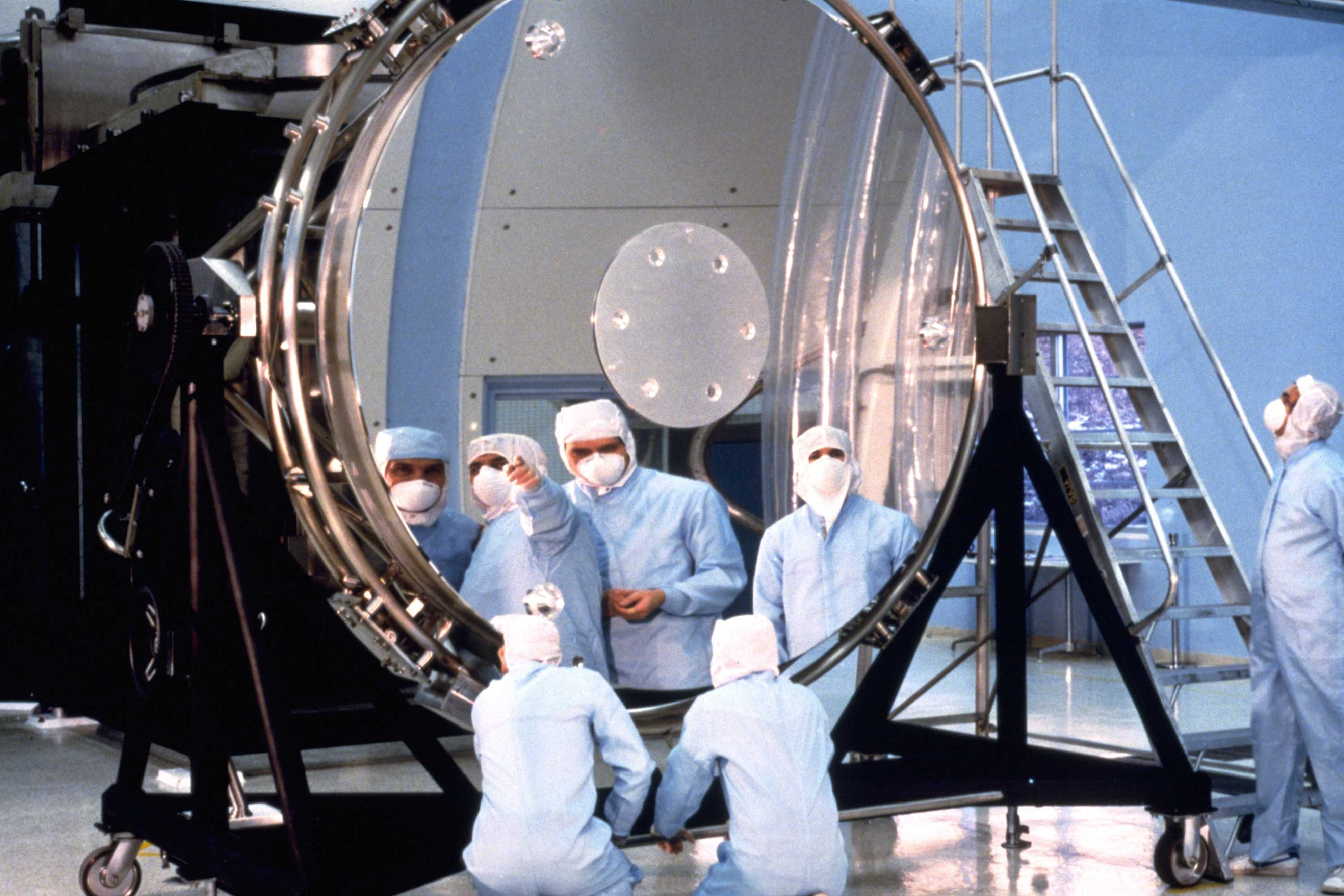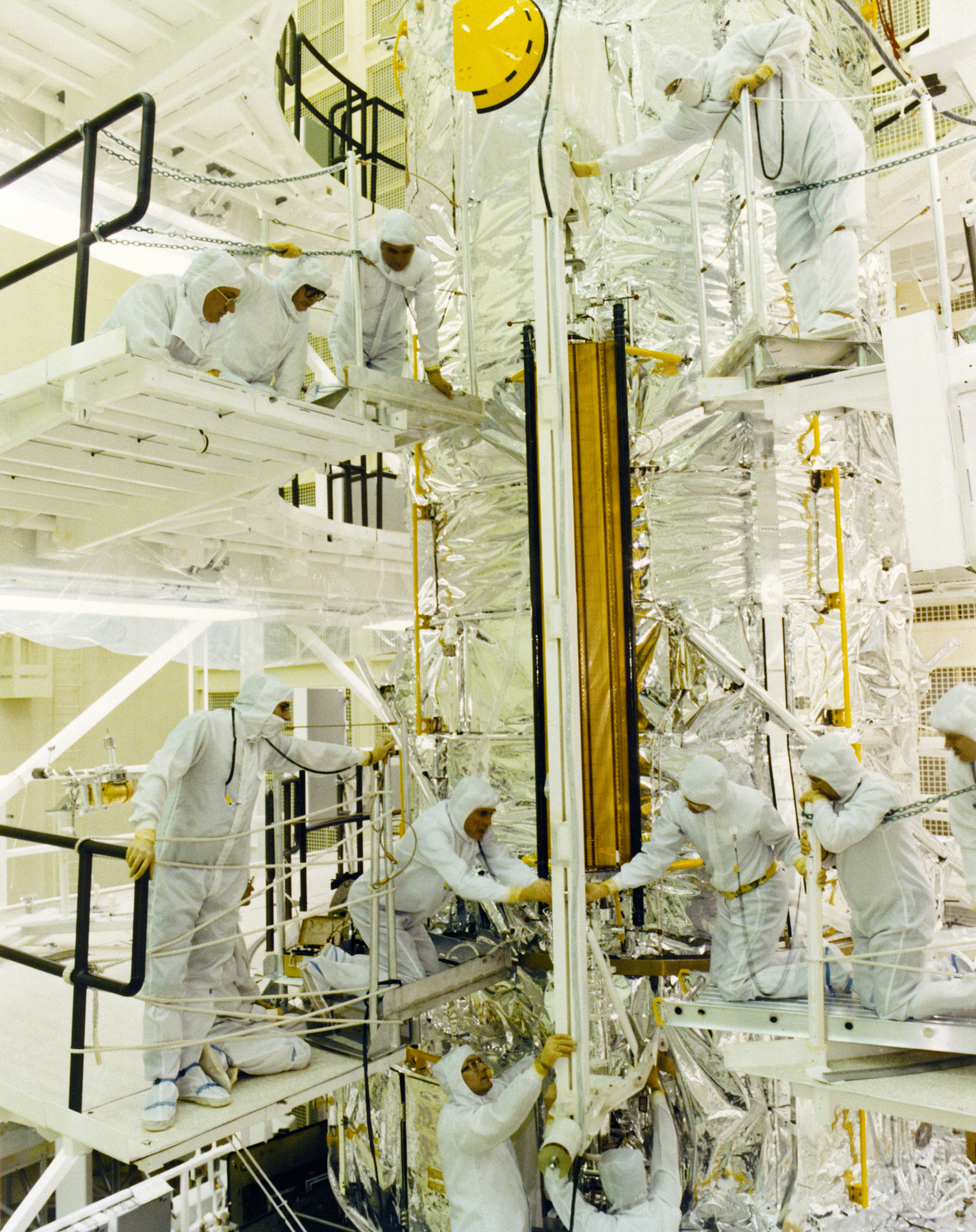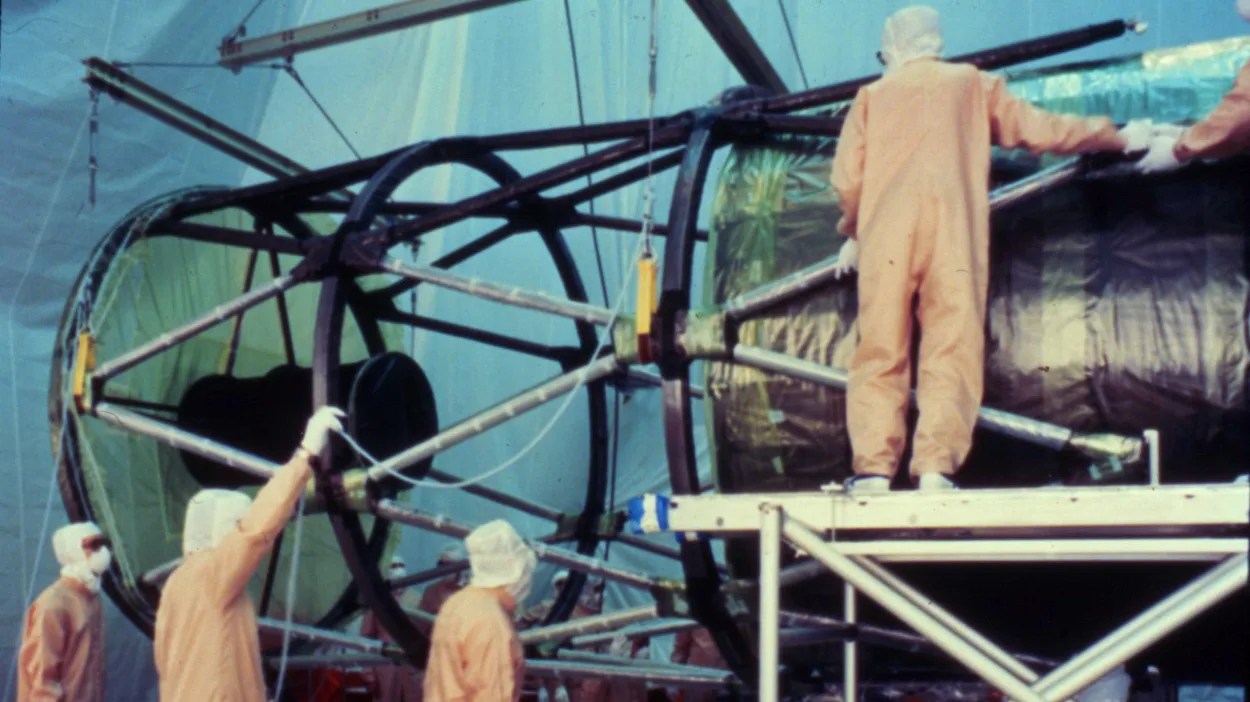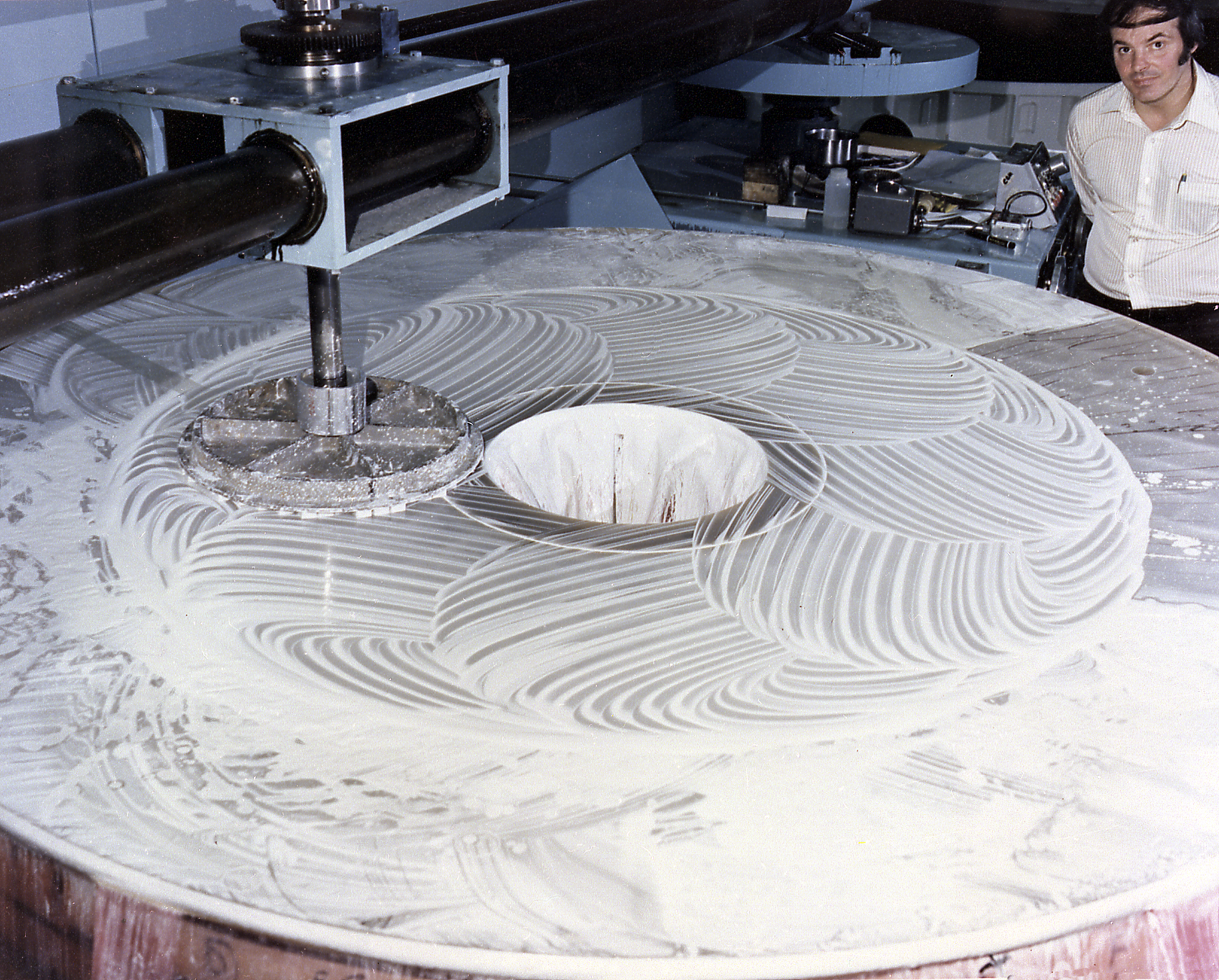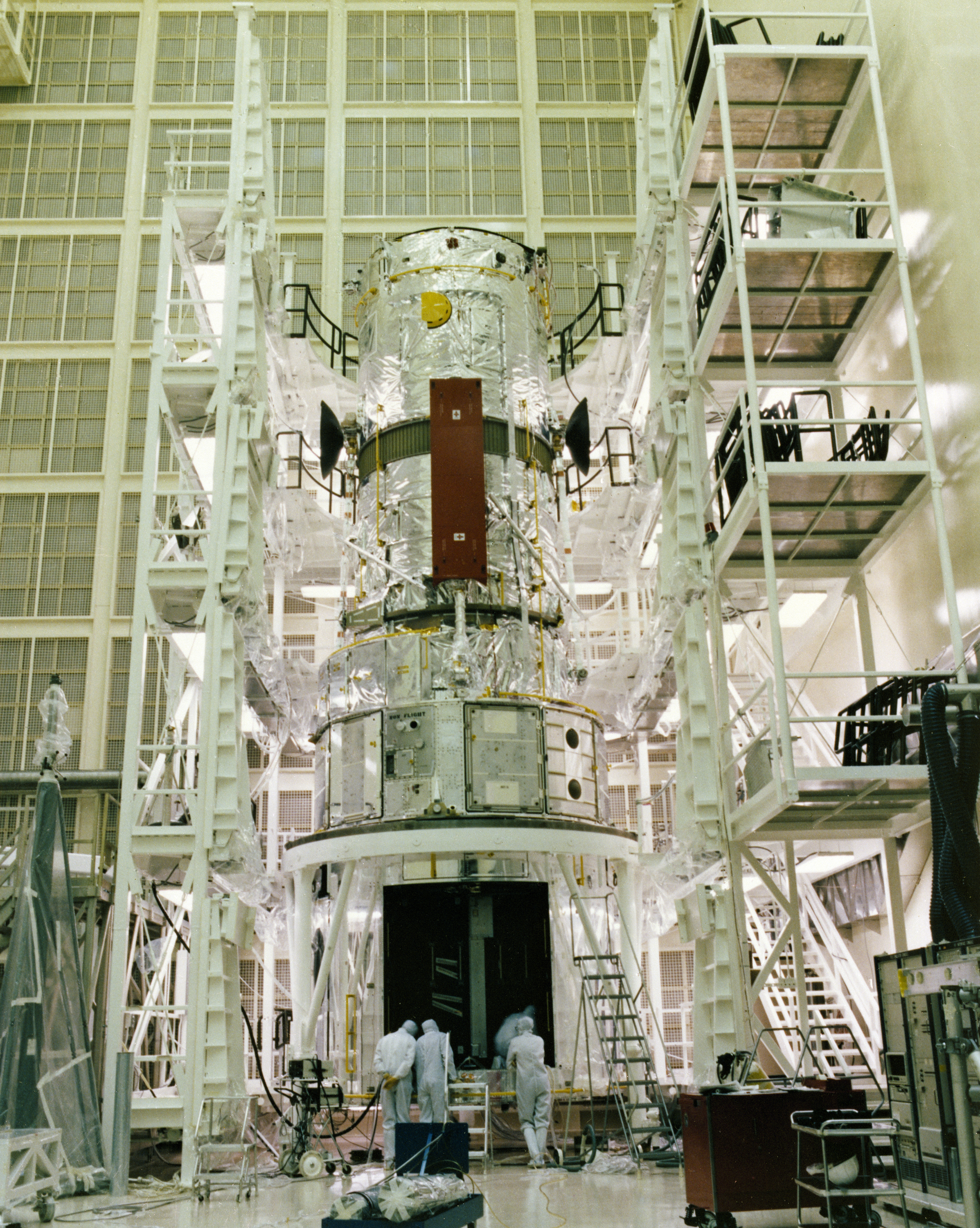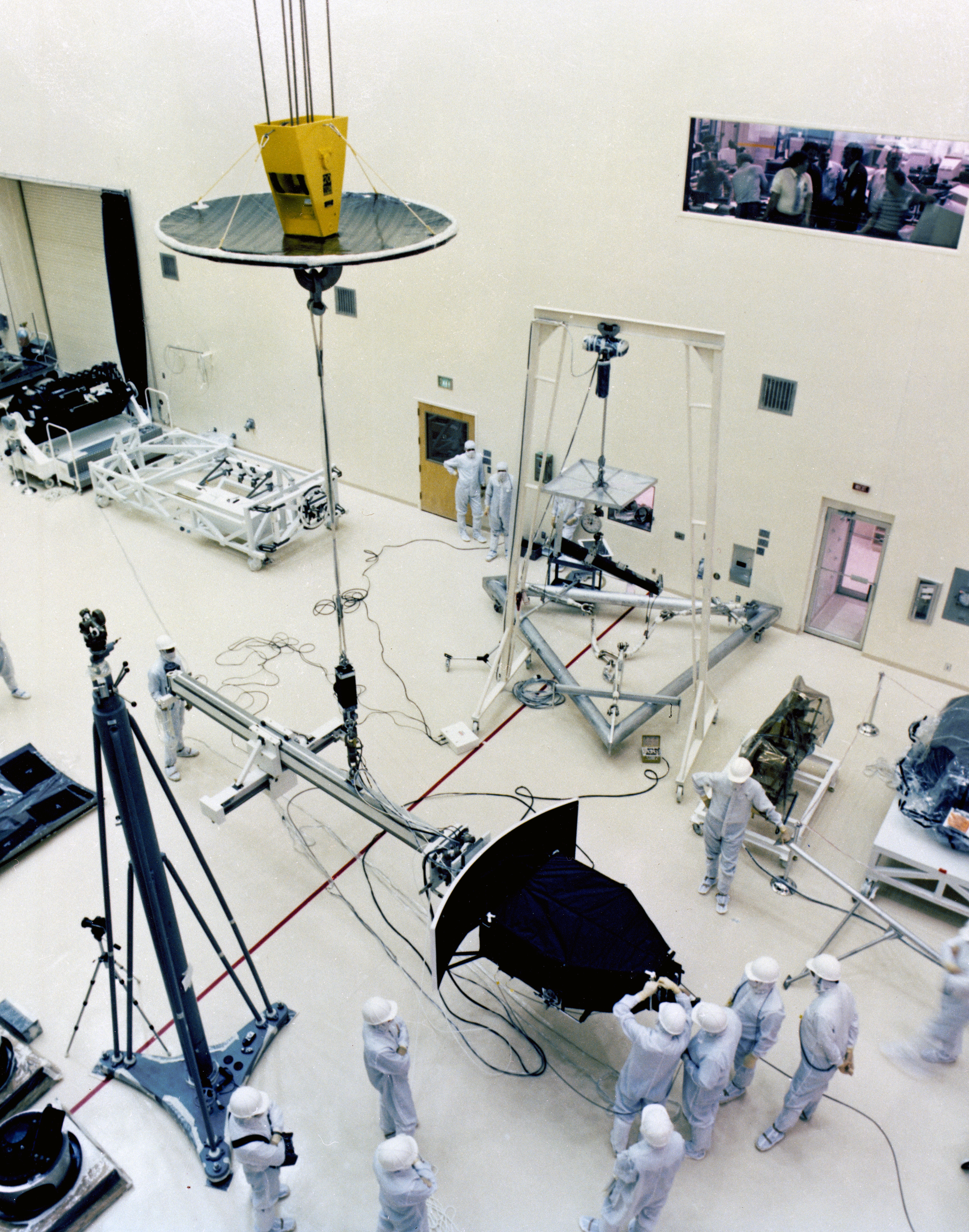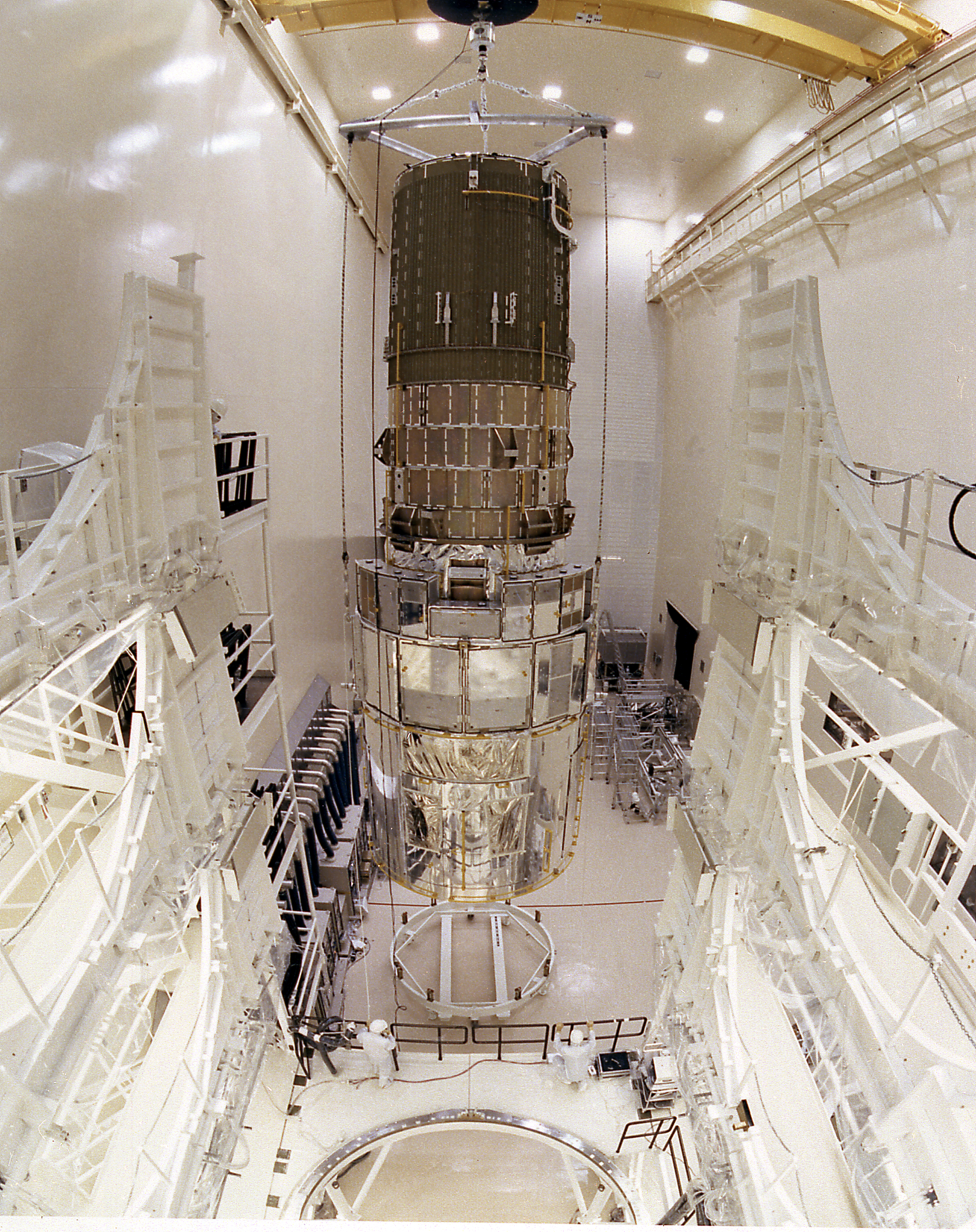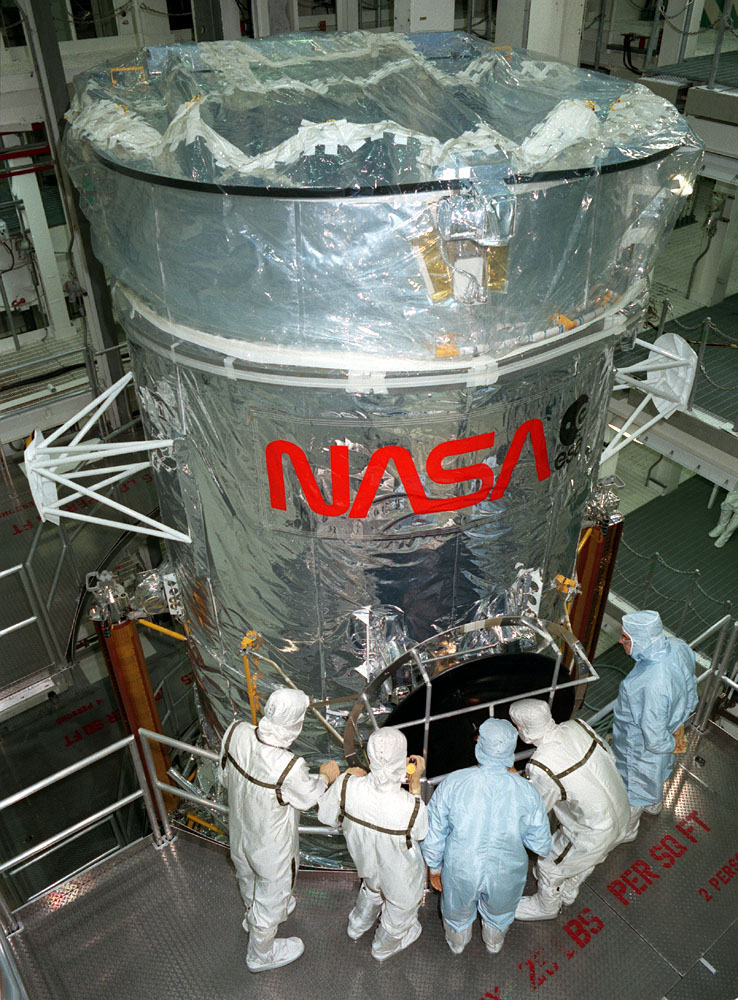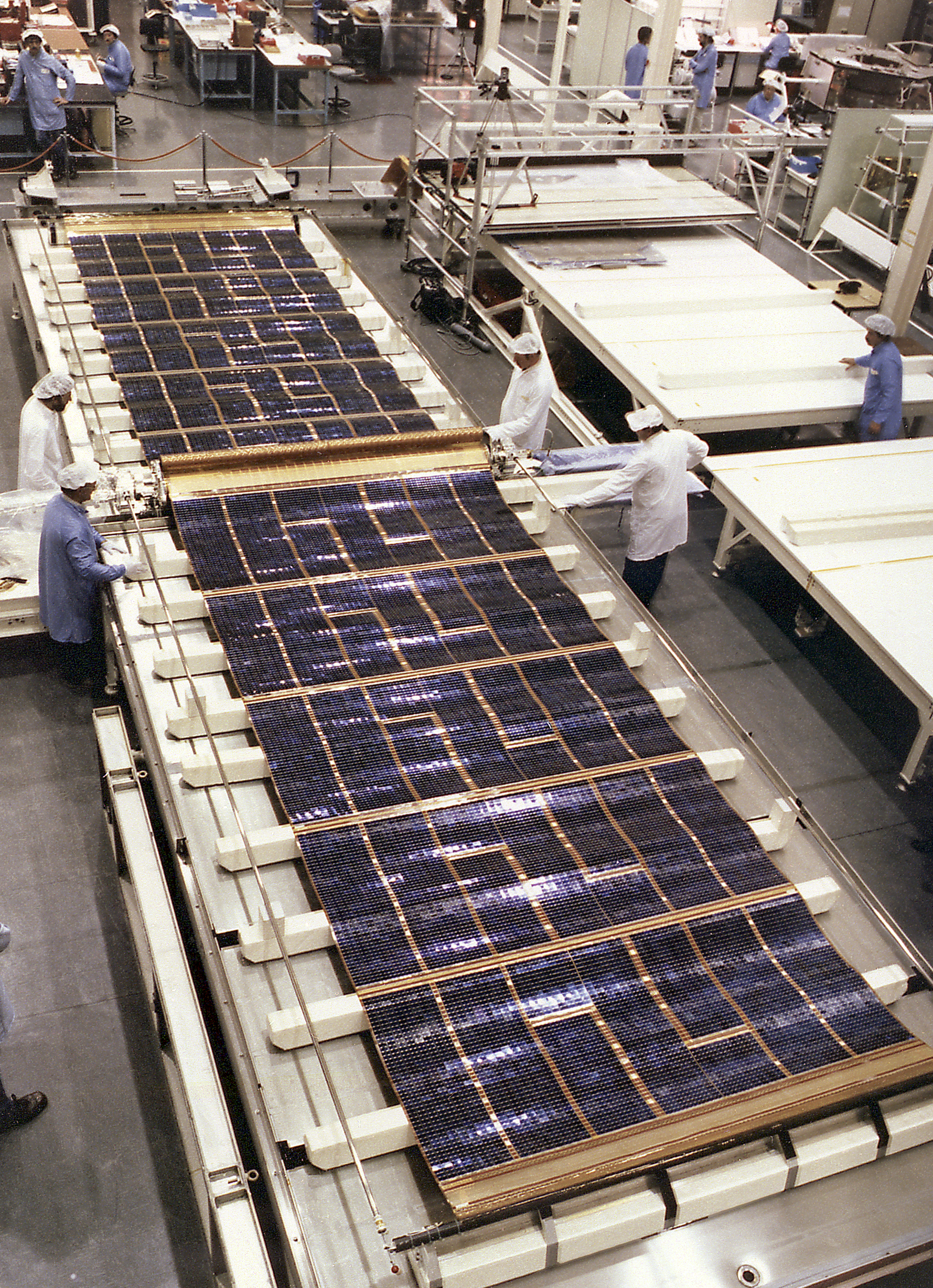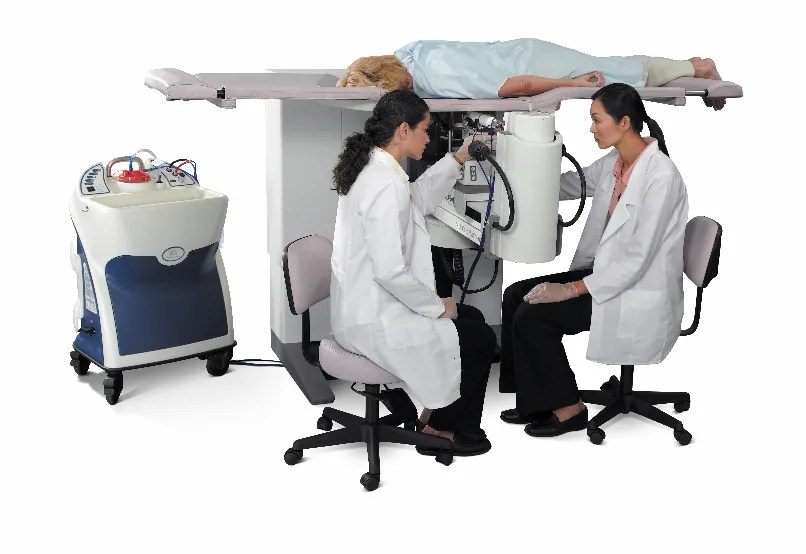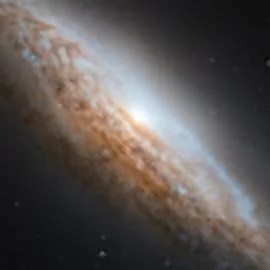Design
Hubble is the first space-based observatory specifically designed for servicing while in orbit.
Quick Facts
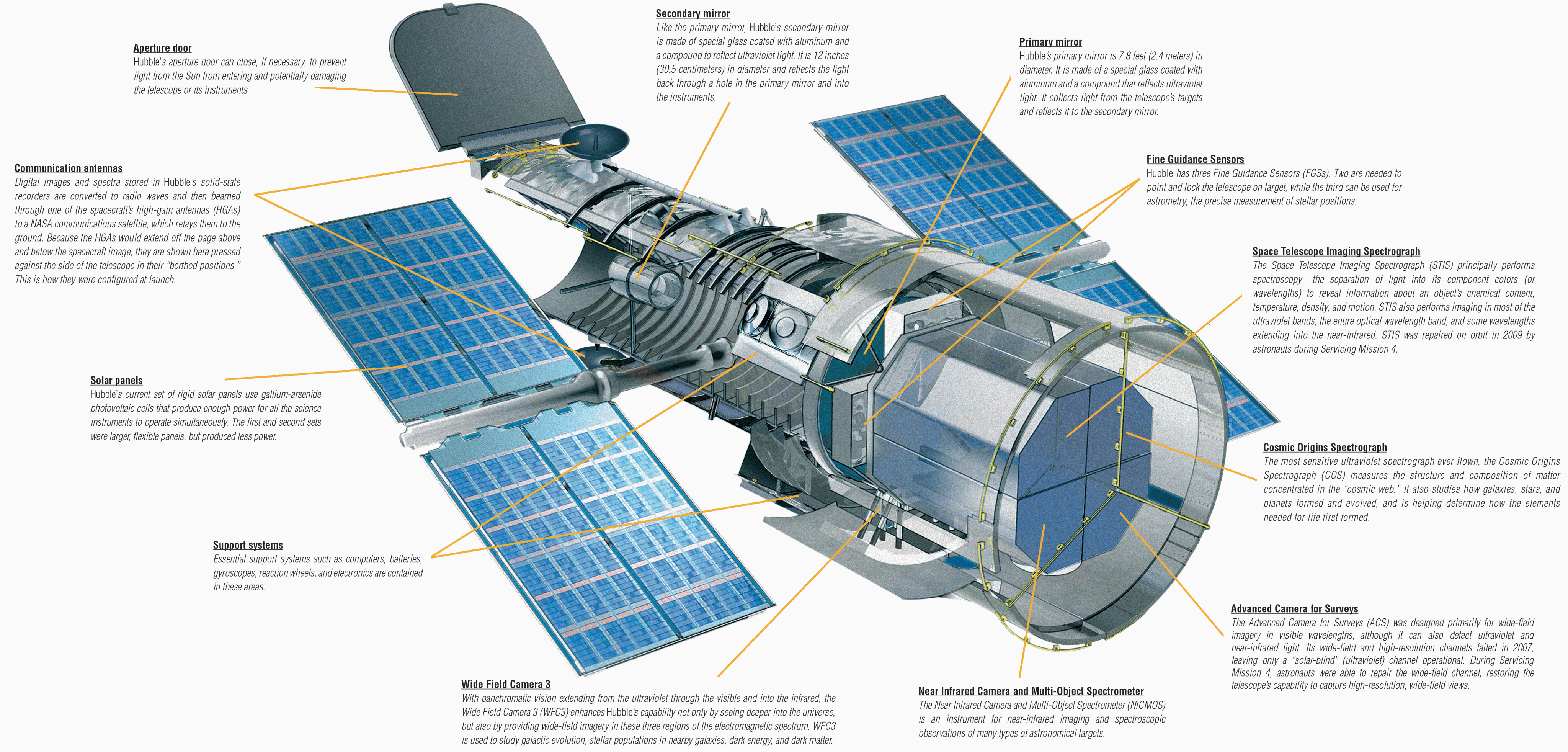
The Telescope
Hubble is classified as a Cassegrain reflector, named after a 15th century French cleric who was among the first to suggest this basic optical design. Light hitting the telescope’s main, or primary, mirror is reflected to a smaller, secondary mirror suspended above the primary. The secondary, in turn, reflects the light back through a hole in the primary, where it enters Hubble’s instruments (cameras and spectrographs) for final focus before it hits their detectors. Hubble’s primary mirror is not only exquisitely polished, but at 94.5 inches (2.4 m) in diameter, collects an immense amount of light. Hubble can detect objects that are 10 billion times fainter than the unaided eye can see.

High above the blurring effects of Earth's atmosphere, Hubble gets a much broader and clearer view of the cosmos than telescopes on the ground. The space telescope can distinguish astronomical objects with an angular diameter of a mere 0.05 of an arcsecond – that's like seeing the width of dime from a distance of 86 miles (138 km). Hubble's resolution is about 10 times better than the best resolution typically attained by larger, ground-based telescopes. High resolution enables Hubble to image objects like dust disks around stars or the glowing nuclei of extremely distant galaxies.
Circling above the atmosphere, Hubble can view astronomical objects across a wider range of the electromagnetic spectrum than ground-baased telescopes, which are constrained by the atmospheric absorption of various wavelengths. Above Earth's atmosphere, Hubble has a fuller view, which offeres astronomers more data into the energetic processes that make up the universe.
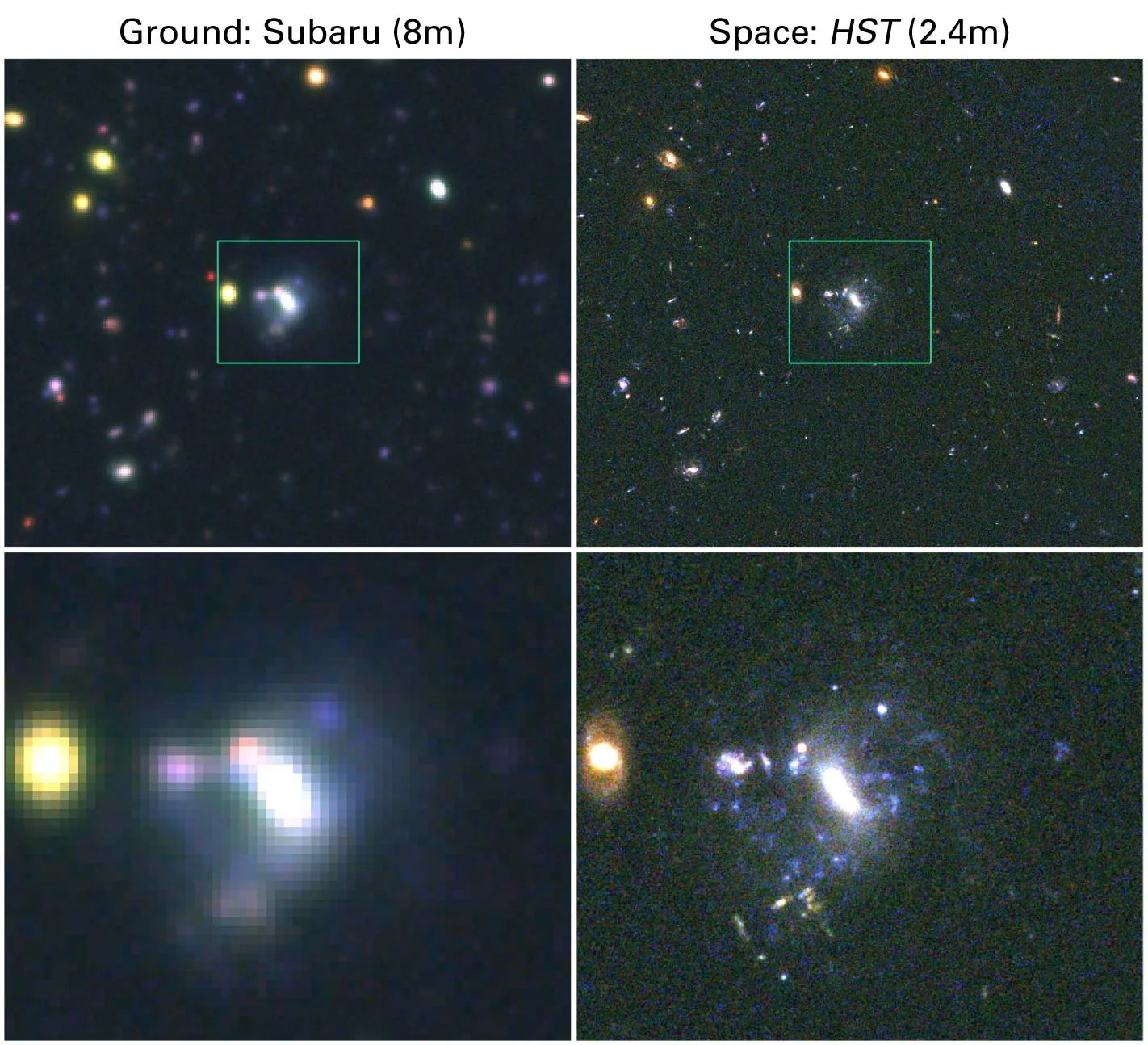
Hubble’s observations are predictably consistent. The telescope’s seeing conditions do not change from day to day or even orbit to orbit. Astronomers can revisit targets with the expectation that they will be imaged at the same high quality each time. This optical stability is critical for detecting tiny motions or other small variations in celestial objects. Such is not the case for ground-based observatories, where observing conditions vary with weather and directly affect the quality of the images acquired.
The Spacecraft
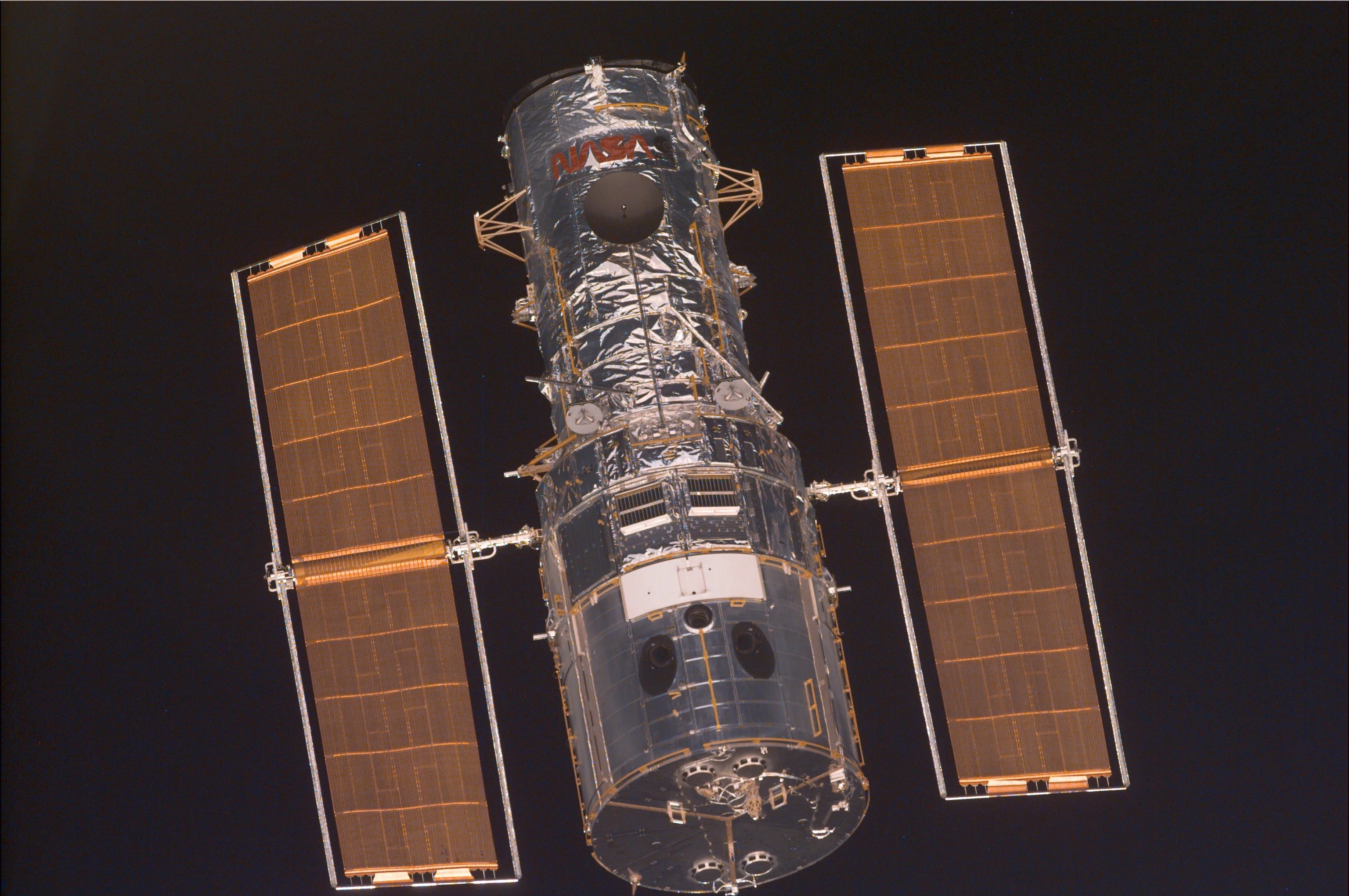
Hubble is 43.5 feet long (13.2 m) and 14 feet wide (4.2 m) at the back, where the scientific instruments are housed. Weighing about 27,000 pounds (12,246 kg), the telescope is approximately the same size and weight as a school bus. The observatory is powered by two solar arrays that convert sunlight into electrical energy that is stored in six large batteries. The batteries allow the observatory to operate during the shadowed portions of Hubble’s orbit when Earth blocks the satellite’s view of the Sun.
In the middle of the spacecraft, near its center of gravity, are four 100-pound (45 kg) reaction wheels used to reorient the observatory. Based upon Sir Isaac Newton’s Third Law of Motion – for every action there is an equal and opposite reaction – turning a reaction wheel in one direction causes Hubble to react by turning the opposite way. The satellite knows where and when it should turn based on a target schedule uploaded from the control center. Hubble’s main computer then calculates which wheels should slow and which ones spin faster to most efficiently maneuver the spacecraft to the new target.
The observatory uses high-precision gyroscopes (gyros) to detect its rate and direction of motion. The telescope has six gyros, but typical operations only use three of them. Originally, the others served as backups, but gyros eventually wear out and fail. Today, Hubble has three operational gyros, but operates with one. The other two are held in reserve as backups.
In addition to gyros, Hubble has three Fine Guidance Sensors (FGSs) that act within the spacecraft’s overall pointing and control system to keep the telescope virtually motionless while observing. Hubble's precision varies by less than 7 milliarcseconds in a 24-hour period when locked on its target. This is equivalent to shining a laser on the head of the president on a dime over 200 miles away for 24 hours.
Commands and data are transmitted between the spacecraft and the control center through two high-gain antennas that communicate through NASA’s Tracking Data and Relay Satellite System, which is in geosynchronous orbit. The science data is then forwarded from the control center to the Space Telescope Science Institute in Baltimore, Maryland, via a wide-area network for processing, dissemination, and archiving.
NASA astronauts visited Hubble five times to repair and upgrade the telescope. These refurbishments, along with the redundancies originally designed into the observatory's critical subsystems, should keep Hubble running for years to come. Based on formal reliability studies, engineers believe that Hubble's instruments and primary spacecraft subsystems (gyros, reaction wheels, solar arrays, batteries, etc.) will continue to operate through the latter part of the 2020s and possibly into the 2030s. This extended lifespan allows Hubble to operate concurrently with the James Webb Space Telescope, providing us with Hubble's views in the ultraviolet, visible, and near-infrared along with Webb's views of the near-infrared to mid-infrared part of the spectrum.
Design Elements
01
Optics
Dr. Robert Hutchings Goddard (1882-1945) is considered the father of modern rocket propulsion. A physicThe Hubble Space Telescope’s mirror-based optical system collects and focuses light from the universe to be analyzed by science and guidance instruments. The optical system, called the Optical Telescope Assembly (OTA), gives Hubble a unique view of the universe by gathering infrared, visible, and ultraviolet light.ist of great insight, Goddard also had a unique genius for invention. It is in memory of this brilliant scientist that NASA’s Goddard Space Flight Center in Greenbelt, Maryland, was established on May 1, 1959.
Learn More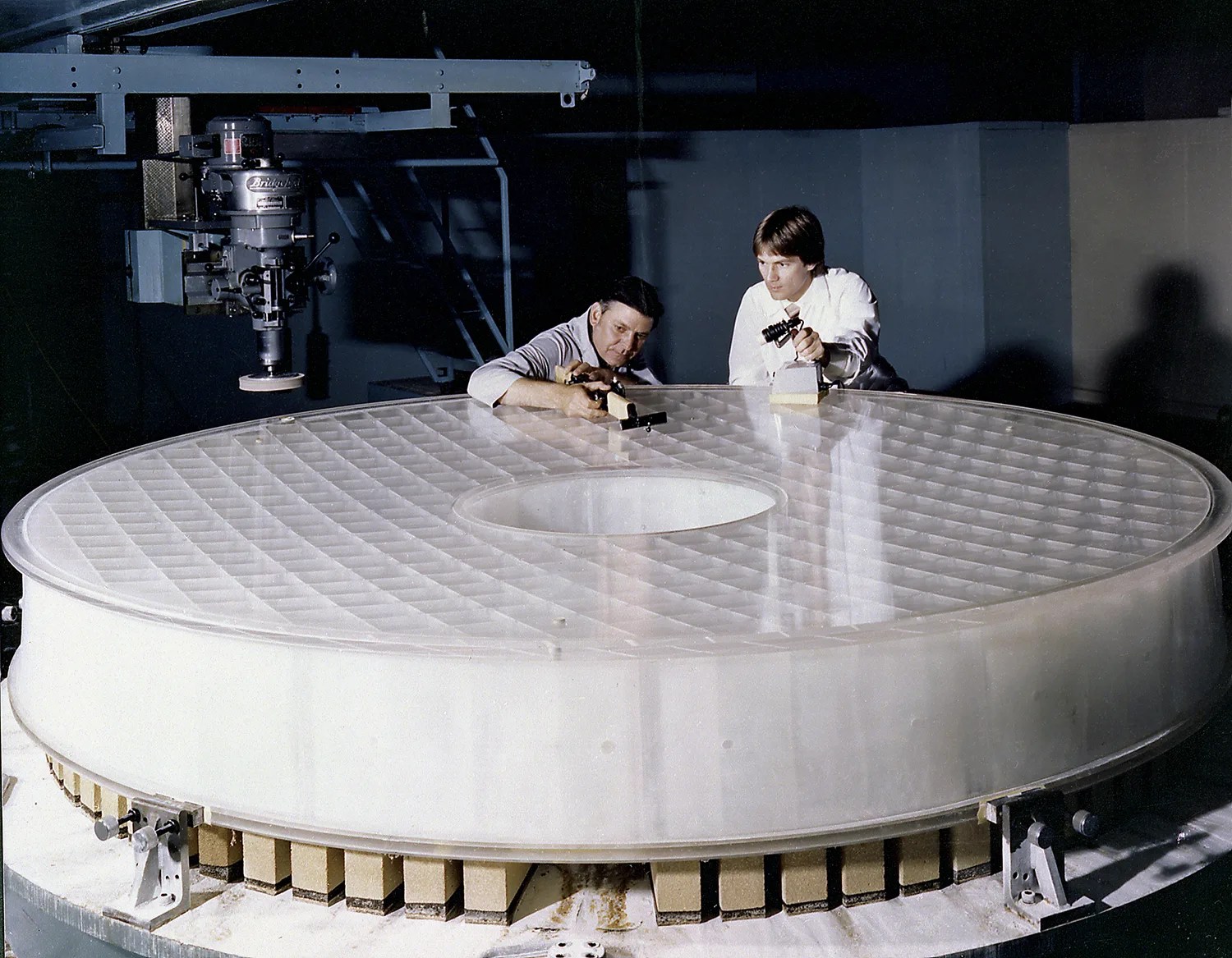
02
Instruments
Hubble has three types of instruments that analyze light gathered and focused by its mirrors. These instruments include cameras, spectrographs, and interferometers.
Learn More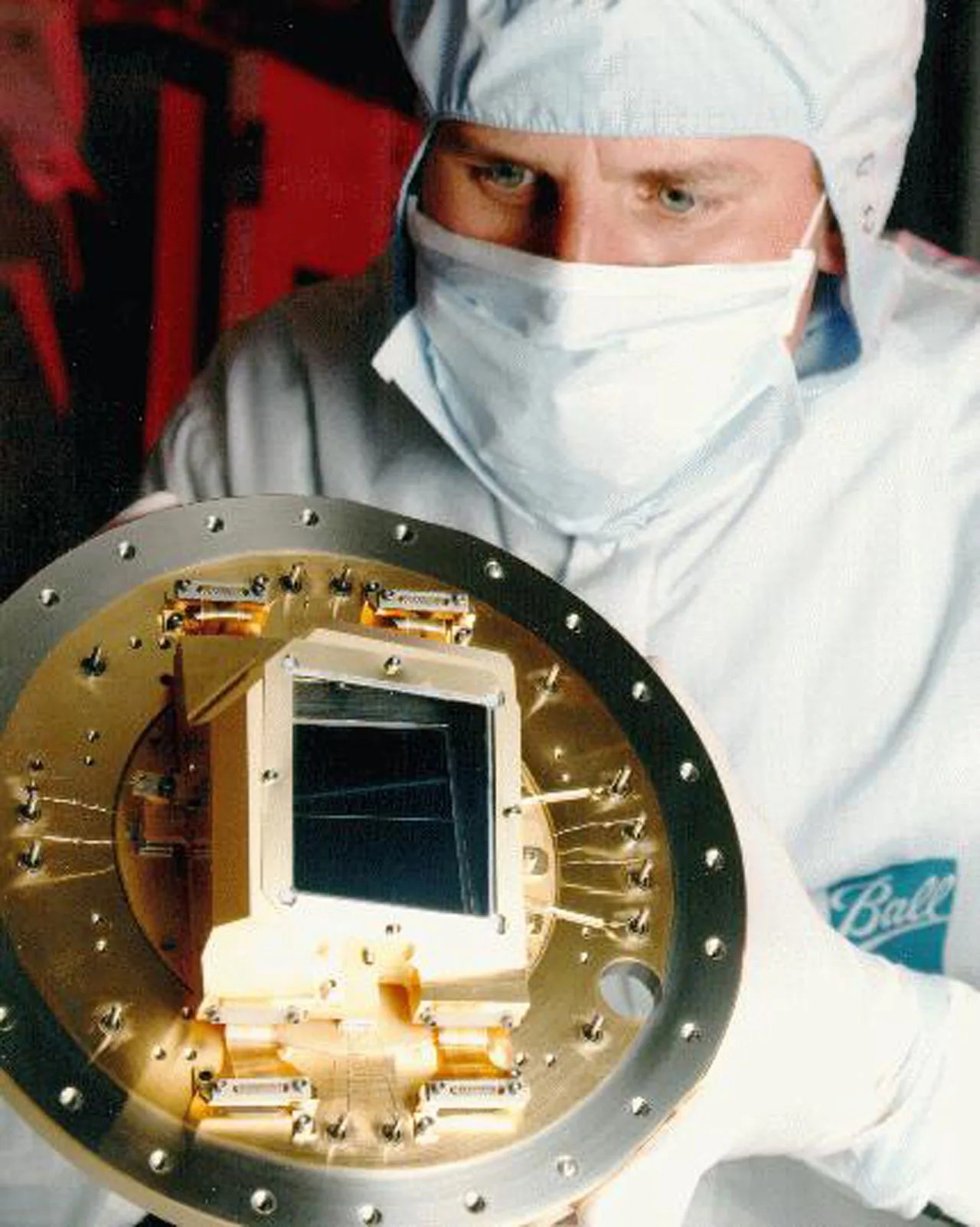
03
Pointing Control
While operating in Earth orbit, the Hubble Space Telescope depends on a robust Pointing Control System to determine the direction in which it is pointing (called its attitude), to turn toward a celestial target, and to remain fixed on that target during observations.
Learn More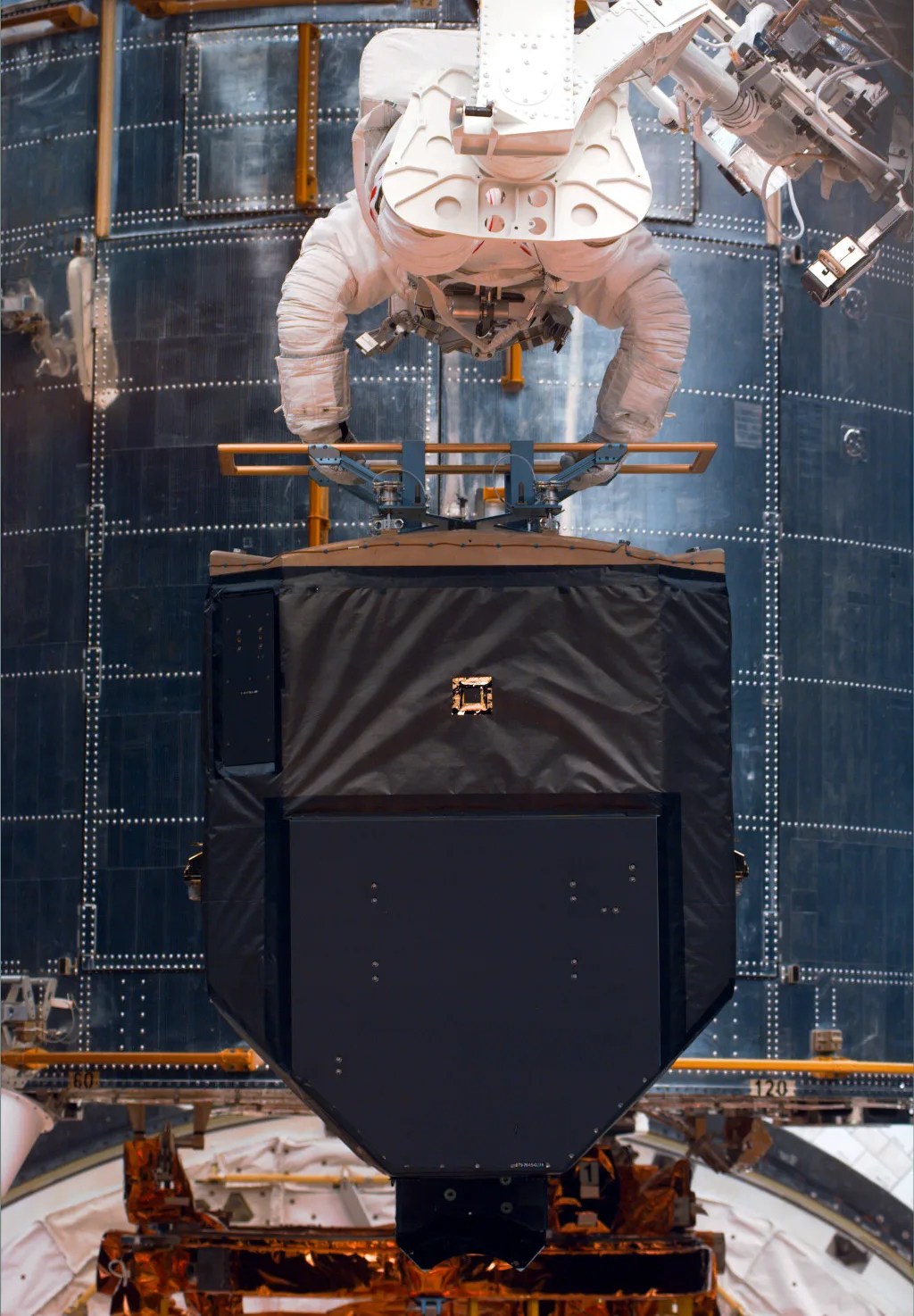
04
Electrical Power
The Hubble Space Telescope requires electricity to power its science instruments, computers, heaters, transmitters, and other electronic equipment. To fulfill that need, Hubble’s electrical power system produces, stores, controls, and distributes electrical energy for the entire spacecraft.
Learn More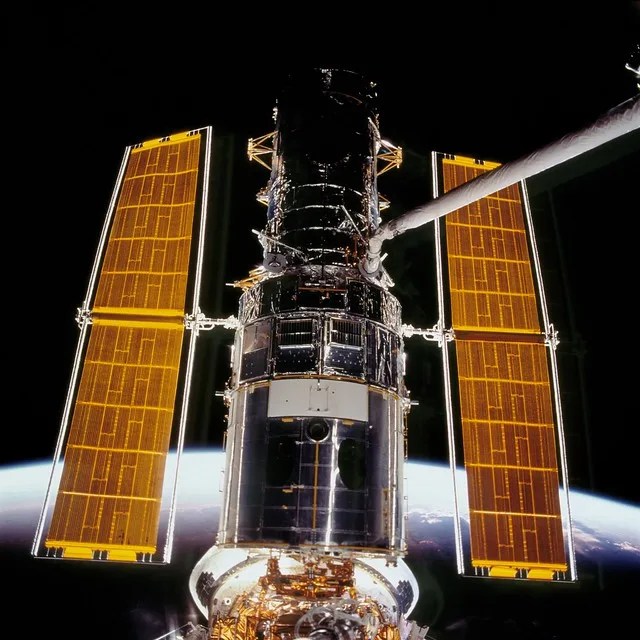
05
Communications
The Hubble Space Telescope's sophisticated communications system enables the telescope to receive commands from Earth-bound controllers and to transmit large amounts of scientific and engineering data back to the ground.
Learn More